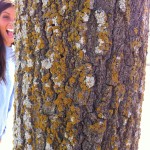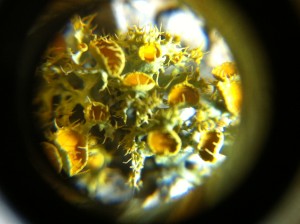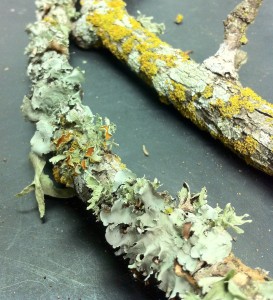 One of the most common mutualistic relationships in the plant world is that of lichens. Made up of one part filamentous fungi and one part algae or blue-green bacteria, lichens are not considered a “true species.” The unique combination results in a very hardy, weather-tolerant, and genetically diverse group of Nitrogen fixers that is practically self-sufficient. The fungal partner cannot survive alone, but instead thrives on the availability of photosynthetic products provided by the algae or bacteria.
One of the most common mutualistic relationships in the plant world is that of lichens. Made up of one part filamentous fungi and one part algae or blue-green bacteria, lichens are not considered a “true species.” The unique combination results in a very hardy, weather-tolerant, and genetically diverse group of Nitrogen fixers that is practically self-sufficient. The fungal partner cannot survive alone, but instead thrives on the availability of photosynthetic products provided by the algae or bacteria.
Lichens are common pioneers on trees, shrubs, soil, and even rocks, but do they kill the host that feeds them? The truth is, whichever host the lichen colonizes benefits from the added moisture and environmental protection, while also providing a place for the lichen to take root and establish a strong residence. Since they are not pathogenic or considered pests, there is no control method available today. While they are sometimes unappealing, removing the lichens mechanically can create fresh wounds that invite more severe plant pathogens to inhabit your landscape.
If a tree or shrub seems to be declining AND is covered in lichens, there is some other cause for the demise such as insect infestation, watering practices, or perhaps even legitimate plant pathogens. Overall, the relationship is mutually beneficial and should not be a cause of worry.




